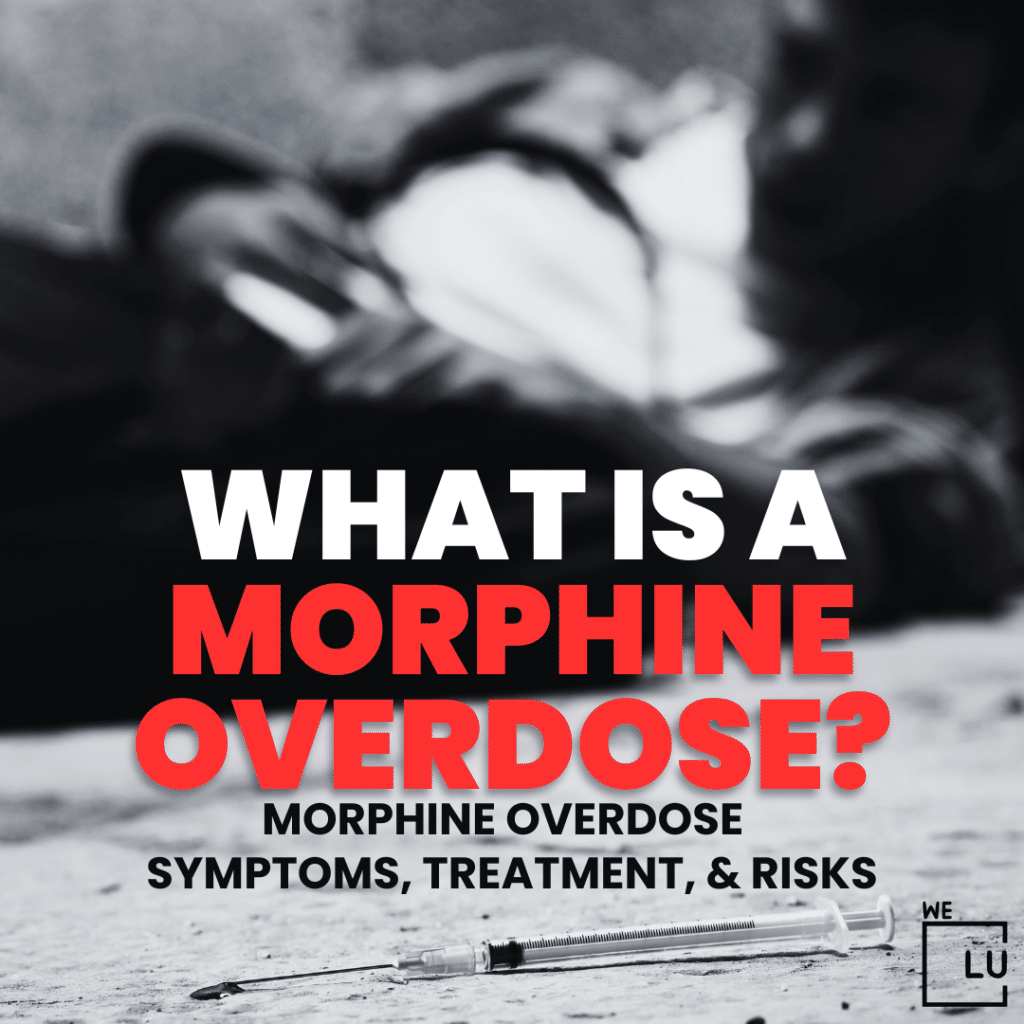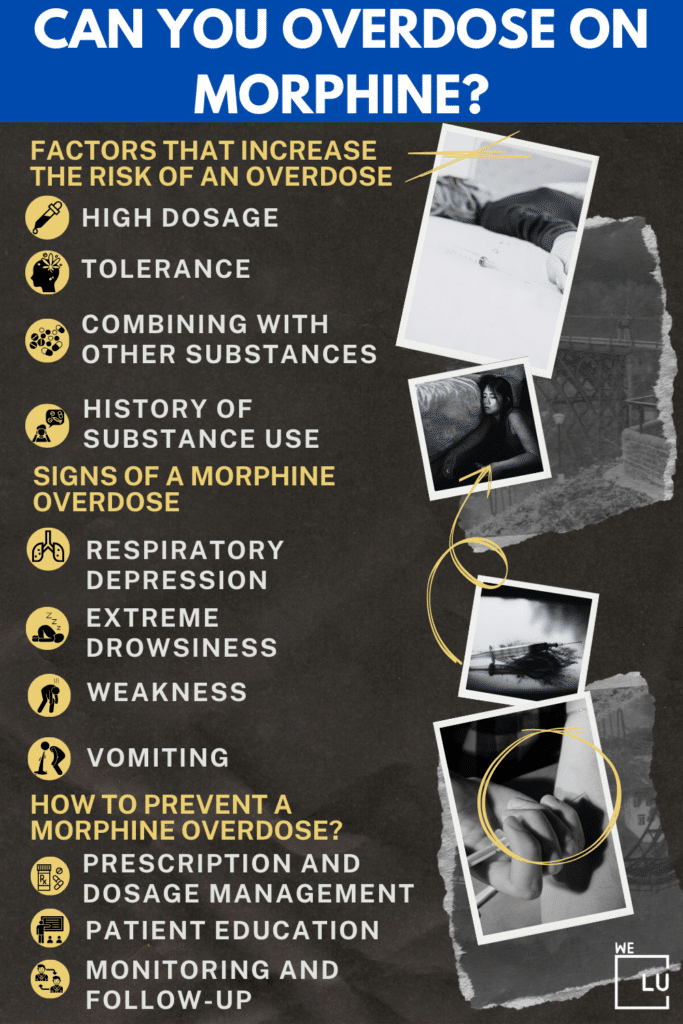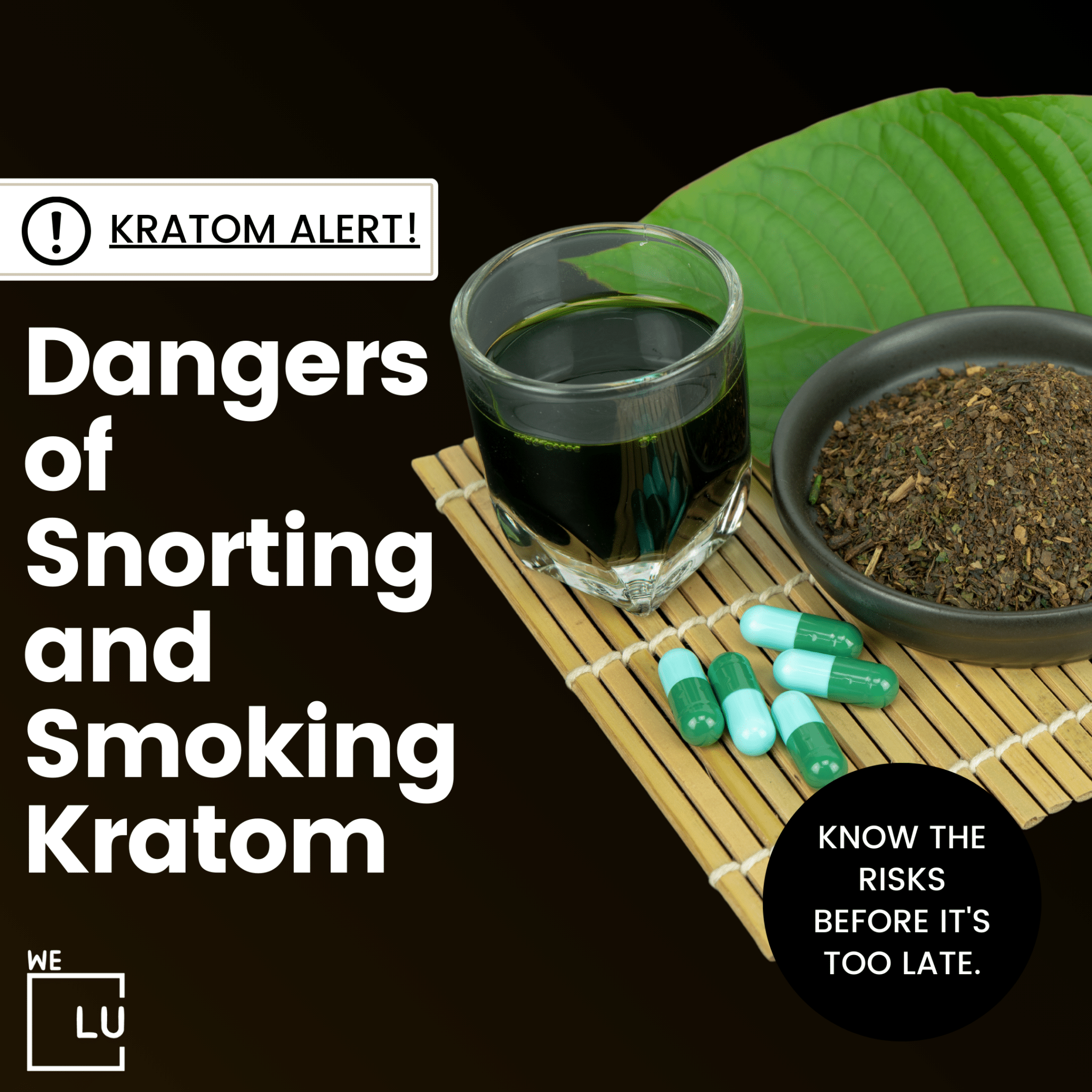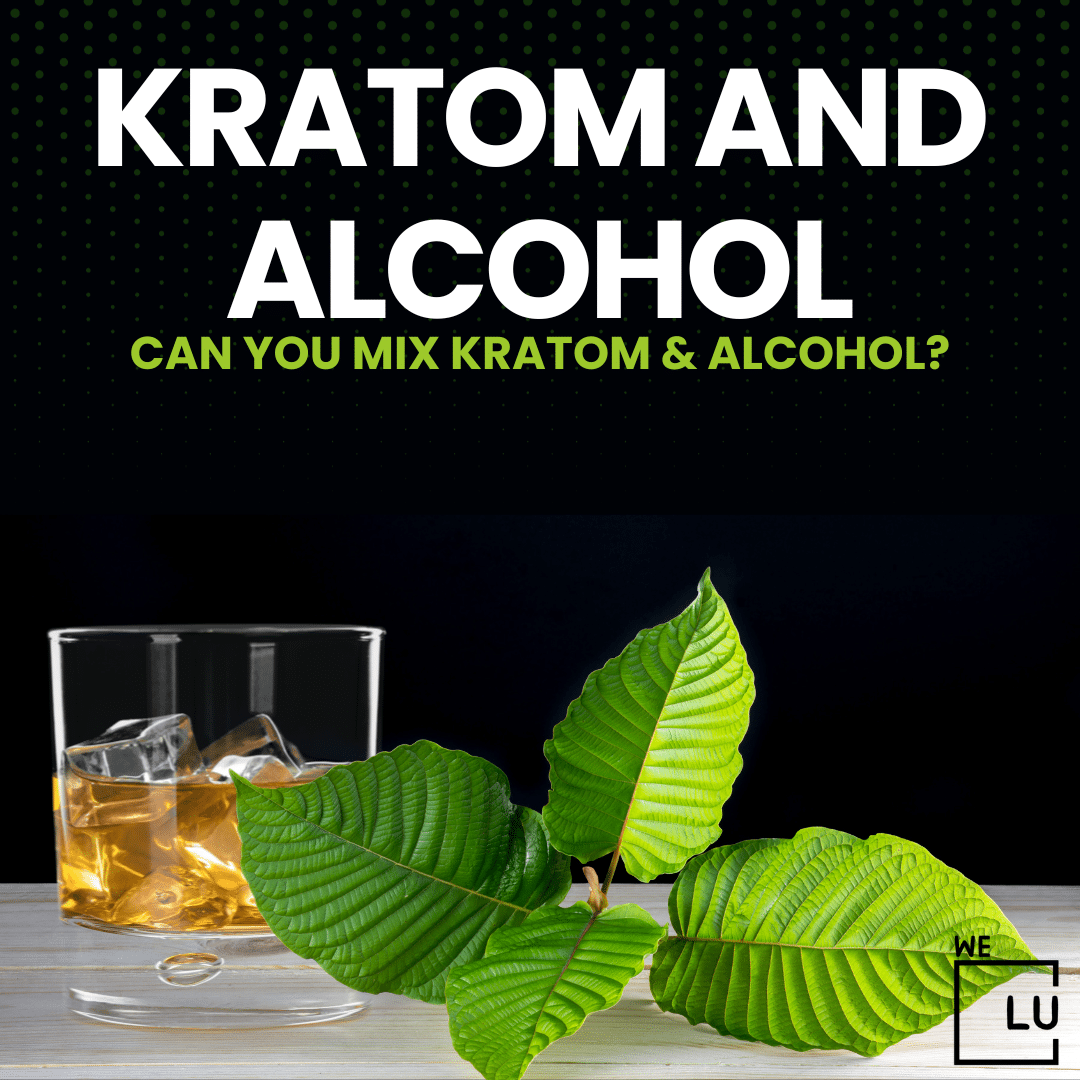Morphine is a potent opioid integral for managing severe pain. However, there is little difference between Morphine’s effective dosage and lethal dosage, making the risk of an overdose extremely high. This is doubly true for those who misuse morphine and take it recreationally. The body can develop a tolerance to the drug and, subsequently, require higher doses to feel the same effects. Those who are addicted to Morphine will have a higher chance of suffering an overdose. One way of preventing an overdose is to educate yourself on how to properly use Morphine as well as identify the signs and symptoms of a Morphine overdose.
If you or someone you know is struggling with morphine addiction, contact We Level Up CA for support and guidance on the path to recovery. Your well-being matters; seeking help is the first step toward a healthier future. Call us now for your free and confidential call!
What Is Morphine
Morphine is a potent opioid analgesic derived from the opium poppy plant, Papaver somniferum. Named after Morpheus, the Greek god of dreams, morphine has been used for centuries to alleviate severe pain and induce a state of euphoria. It is classified as a Schedule II controlled substance due to its high potential for abuse and addiction.
As an opiate, morphine acts on the central nervous system by binding to specific receptors called opioid receptors, particularly the mu-opioid receptors. This interaction results in the modulation of pain perception, causing a profound analgesic effect. Morphine is commonly prescribed for severe pain associated with conditions such as post-surgical recovery, cancer, and other debilitating illnesses.
Despite its therapeutic benefits, morphine use carries inherent risks. Prolonged use can lead to the development of tolerance, dependence, and addiction. Additionally, morphine has notable side effects, including respiratory depression, sedation, constipation, and nausea.
In medical settings, morphine is administered in various forms, including oral tablets, injectable solutions, and controlled-release formulations. Healthcare providers carefully monitor its use to balance pain relief with potential adverse effects. While morphine remains a crucial tool in managing severe pain, ongoing research and medical advancements aim to develop alternative analgesics with fewer side effects and reduced addictive potential.
Can You Overdose On Morphine?
Morphine is a potent opioid, and like other opioids, an overdose can occur when an individual takes a dose that exceeds the body’s ability to metabolize or eliminate the drug. An overdose of morphine can be life-threatening and is characterized by severe respiratory depression, sedation, pinpoint pupils, and, in extreme cases, coma or death.
Several factors can increase the risk of a morphine overdose, including:
- High Doses: Taking doses higher than prescribed or recommended can increase the risk of overdose.
- Tolerance: Individuals who have developed tolerance to morphine may require higher doses to achieve the desired pain relief, increasing the risk of overdose.
- Combining with Other Substances: Using morphine in combination with other substances, especially central nervous system depressants like alcohol or benzodiazepines, can potentiate the depressant effects and increase the risk of overdose.
- Reduced Tolerance: Individuals who have had a period of reduced tolerance, such as after a period of abstinence, may be more susceptible to overdose if they resume taking the same dose they were accustomed to before the tolerance break.
What Is The Lethal Dose Of Morphine?
The lethal dose of morphine can vary widely among individuals due to factors such as tolerance, body weight, overall health, and the presence of other substances in the body. It’s essential to note that discussing specific lethal doses can be challenging because what may be fatal for one person may not be for another.
Morphine has a narrow therapeutic window, meaning there is a relatively small range between the effective dose for pain relief and a potentially lethal dose. Taking too much morphine can lead to respiratory depression, which is the primary cause of death in opioid overdoses.
Factors that can influence the likelihood of a lethal overdose include:
- Tolerance: Individuals who have developed tolerance to opioids may be able to tolerate higher doses without experiencing the same level of respiratory depression.
- Body Weight: Generally, smaller individuals may be more susceptible to the effects of opioids, including respiratory depression, than larger individuals.
- Health Status: Underlying health conditions, especially respiratory or liver impairment, can increase the risk of complications from a morphine overdose.
- Polydrug Use: Combining morphine with other central nervous system depressants, such as alcohol or benzodiazepines, can significantly increase the risk of a lethal overdose.
Signs Of A Morphine Overdose
The symptoms of a morphine overdose include:
- Respiratory Depression: One of the most critical signs is slowed or shallow breathing. In severe cases, it can lead to respiratory failure, where breathing stops altogether.
- Extreme Drowsiness or Unconsciousness: A person who has overdosed on morphine may find it difficult to wake up, excessively tired, or completely unresponsive.
- Pinpoint Pupils: Morphine, like other opioids, can cause the pupils of the eyes to constrict (pinpoint pupils). This is a classic sign of opioid toxicity.
- Cold and Clammy Skin: The skin may become pale, cold, and clammy due to decreased blood circulation.
- Weakness and Limpness: Muscles may become highly relaxed, and the person may feel weak or limp.
- Bluish Tinge to Lips and Fingernails: This indicates inadequate oxygenation and a severe lack of oxygen in the bloodstream.
- Vomiting or Gurgling Sounds: As a result of respiratory depression, a person may vomit or make gurgling sounds.
If you suspect someone has overdosed on morphine or any opioid, it is critical to call emergency services immediately. Time is of the essence in treating opioid overdoses, and prompt medical intervention, including the administration of naloxone (if available), can be life-saving. Never hesitate to seek help if you observe these signs in yourself or someone else after the ingestion of morphine or any opioid medication.

Skip To:
Learn More:
- Morphine Addiction, Signs, Symptoms, And Treatments
- Morphine Withdrawal Symptoms, Timeline, Detox, & Treatments
- Morphine Vs Oxycodone, Is Morphine Stronger Than Oxycodone?
- How Long Does Morphine Stay In Your System?
- Morphine Vs Oxycodone, Is Morphine Stronger Than Oxycodone?
- Is There A Poppy Seed Drug? Poppy Seed Effects On Drug Test
Morphine Overdose Treatments
A morphine overdose requires immediate medical attention, and treatment is aimed at reversing the effects of the opioid and providing supportive care. Here are the primary treatments for a morphine overdose:
- Emergency Medical Services: If a morphine overdose is suspected, it is crucial to call emergency services (911 or your local emergency number) immediately. Time is critical in treating opioid overdoses.
- Administration of Naloxone: Naloxone is an opioid receptor antagonist that can rapidly reverse the effects of opioid toxicity, including respiratory depression. It is available in injectable and intranasal forms. Naloxone works by displacing opioids from the receptors, restoring normal respiratory function. Emergency medical personnel often carry naloxone, and some regions allow laypersons to administer it in emergencies.
- Respiratory Support: In severe cases of morphine overdose, individuals may experience respiratory failure. Mechanical ventilation may be required to support breathing until the effects of the opioid are sufficiently reversed.
- Monitoring and Supportive Care: Continuous monitoring of vital signs, such as heart rate, blood pressure, and oxygen saturation, is essential. Supportive care may include intravenous fluids for hydration and other measures to address complications.
- Gastric Lavage or Activated Charcoal: In some cases, if the overdose is recent and the person is conscious, gastric lavage (stomach pumping) or activated charcoal may be used to reduce the absorption of morphine from the gastrointestinal tract. However, the effectiveness of these measures decreases with time after ingestion.
Naloxone is a temporary solution, and its effects may wear off before the opioid is fully metabolized, requiring additional doses or continuous infusion in severe cases. Following naloxone administration, individuals should be closely monitored, and further medical evaluation and treatment may be necessary.
Anyone who has been administered naloxone or treated for a morphine overdose should seek follow-up care with healthcare professionals to address the underlying issues and receive appropriate guidance on future pain management.

Get Your Life Back
Find Hope & Recovery. Get Safe Comfortable Detox, Addiction Rehab & Dual Diagnosis High-Quality Care.
Hotline (855) 695-1160
Morphine Dosages
Morphine dosages can vary widely based on factors such as the severity of pain, the individual’s medical condition, tolerance to opioids, and the specific formulation of the morphine prescribed. Morphine is available in various forms, including immediate-release and extended-release formulations. Follow the prescribed dosage and administration instructions a healthcare professional provides. Below are general guidelines for morphine dosages:
| Morphine Formulation | Purpose | Starting Dosage Range | Frequency | Titration/Adjustment |
|---|---|---|---|---|
| Immediate-Release Morphine | Moderate to Severe Pain | 10 mg to 30 mg every 4 hours as needed | As needed | Dosage adjusted based on individual response and pain severity |
| Extended-Release Morphine | Around-the-Clock Pain Relief | 15 mg to 60 mg every 8 or 12 hours | Every 8 or 12 hours | Dosage adjusted based on individual response and pain control |
Individual patient factors, such as age, weight, overall health, and the presence of other medical conditions, can influence the appropriate morphine dosage. Patients should always communicate openly with their healthcare providers about their pain levels and any concerns about side effects or medication effectiveness.
It is crucial to use morphine under the supervision of a healthcare professional, and self-adjusting the dosage or frequency can lead to severe complications, including overdose. If there are questions or concerns about morphine dosages, patients should consult their healthcare provider for guidance.
Get Help. Get Better. Get Your Life Back.
Searching for an Accredited Drug and Alcohol Rehab Centers in Near You?
Even if you have failed previously and relapsed, or are in the middle of a difficult crisis, we stand ready to support you. Our trusted behavioral health specialists will not give up on you. When you feel ready or just want someone to speak to about therapy alternatives to change your life call us. Even if we cannot assist you, we will lead you to wherever you can get support. There is no obligation. Call our hotline today.
FREE Addiction Hotline – Call 24/7Factors That Increase The Risk Of An Overdose
Several factors can increase the risk of experiencing an overdose, especially when it comes to opioids like morphine. Some key factors include:
- High Dosage: Taking doses higher than prescribed or recommended increases the risk of overdose. High doses can overwhelm the body’s ability to metabolize the drug safely.
- Tolerance: Individuals who have developed tolerance to opioids may require higher doses to achieve the same level of pain relief. Tolerance can increase the risk of inadvertently taking a dose that exceeds safe levels.
- Combining with Other Substances: Concurrent use of morphine with other central nervous system depressants, such as benzodiazepines, alcohol, or other opioids, can synergistically increase the risk of respiratory depression and overdose.
- History of Substance Use Disorder: Individuals with a history of substance use disorder, especially opioid dependence, are at an increased risk of overdose due to altered drug-seeking behavior, tolerance, and potential for misuse.
- Reduced Tolerance: After a period of abstinence, such as during detoxification or after a period without opioid use, the body’s tolerance decreases. If opioid use is resumed at previous levels, the risk of overdose is heightened.
- Age and Health Status: Older adults and individuals with compromised liver or kidney function may be more susceptible to the effects of opioids, increasing the risk of overdose.
- Polydrug Use: The concurrent use of multiple substances, especially those that depress the central nervous system, can lead to additive effects, increasing the risk of respiratory depression and overdose.
- Prescription Errors: Incorrect prescribing or dispensing of medications, including morphine, can result in patients receiving doses that are too high, leading to an increased risk of overdose.
- Lack of Patient Education: Inadequate understanding of proper medication use, including dosage instructions and potential interactions, can contribute to the risk of overdose.
- Inadequate Pain Management Assessment: Failure to assess and manage pain effectively may lead individuals to take higher doses than prescribed, increasing the risk of overdose.

First-class Facilities & Amenities
World-class High-Quality Addiction & Mental Health Rehabilitation Treatment
Rehab Centers TourRenowned California Addiction Center. Serene Private Facilities. Inpatient rehab programs vary.
Addiction Helpline (855) 695-1160Proven recovery success experience, backed by a Team w/ History of:
15+
Years of Unified Experience
100s
5-Star Reviews Across Our Centers
10K
Recovery Success Stories Across Our Network
- Low Patient to Therapist Ratio
- Onsite Medical Detox Center
- Comprehensive Dual-Diagnosis Treatment
- Complimentary Family & Alumni Programs
- Coaching, Recovery & Personal Development Events

How To Prevent A Morphine Overdose?
Preventing a morphine overdose involves a combination of responsible prescribing practices, patient education, and careful medication management.
By implementing the strategies outlined below, healthcare providers and patients can work together to minimize the risk of morphine overdose while still addressing pain management needs effectively. Healthcare professionals and patients need to be vigilant and proactive in promoting safe opioid use.
- Prescription and Dosage Management:
- Healthcare providers should carefully assess a patient’s medical history, pain levels, and potential risk factors before prescribing morphine.
- Prescriptions should be written at the lowest effective dose for the shortest duration necessary to manage pain.
- Dosages should be adjusted based on individual responses, and patients should not self-adjust their medication.
- Patient Education:
- Patients should receive thorough education about the risks and benefits of morphine, including the potential for overdose.
- Clear instructions on how to take the medication, including dosage, frequency, and any specific precautions, should be provided.
- Patients should be educated on the signs of overdose and the importance of seeking immediate medical attention if they suspect an overdose.
- Monitoring and Follow-up:
- Healthcare providers should regularly monitor patients using morphine, assessing their pain levels, side effects, and any signs of misuse.
- Regular follow-up appointments are essential to reassess the ongoing need for opioids and adjust the treatment plan accordingly.
- Avoiding Polydrug Use:
- Patients should be advised to avoid combining morphine with other substances that depress the central nervous system, such as alcohol or benzodiazepines.
- Healthcare providers should carefully assess for potential drug interactions when prescribing multiple medications.
- Naloxone Availability and Education:
- In some cases, healthcare providers may prescribe naloxone, an opioid antagonist, alongside opioids. Naloxone can rapidly reverse the effects of opioid overdose.
- Patients and caregivers should be educated on how to use naloxone, and it should be readily accessible in case of emergency.
- Risk Assessment:
- Healthcare providers should conduct a comprehensive risk assessment, especially in individuals with a history of substance use disorder, mental health issues, or other risk factors for opioid misuse.
- Alternative pain management strategies, such as physical therapy or non-opioid medications, should be considered when appropriate.
- Patient Communication: Patients should feel comfortable discussing their pain levels, concerns, and side effects with their healthcare team.
World-class, Accredited, 5-Star Reviewed, Effective Addiction & Mental Health Programs. Complete Behavioral Health Inpatient Rehab, Detox plus Co-occuring Disorders Therapy.
CALL (855) 695-1160End the Addiction Pain. End the Emotional Rollercoaster. Get Your Life Back. Start Drug, Alcohol & Dual Diagnosis Mental Health Treatment Now. Get Free No-obligation Guidance by Substance Abuse Specialists Who Understand Addiction & Mental Health Recovery & Know How to Help.
Joey’s Opiates Alcohol Drugs Addiction Recovery Story After Death of His Son at 26 From Fentanyl OD
Experience Transformative Recovery at the We Level Up California Treatment Center.
See our authentic success stories. Get inspired. Get the help you deserve.



Start a New Life
Begin with a free call to an addiction & behavioral health treatment advisor. Learn more about our dual-diagnosis programs. The We Level Up treatment center network delivers recovery programs that vary by each treatment facility. Call to learn more.
- Personalized Care
- Caring Accountable Staff
- World-class Amenities
- Licensed & Accredited
- Renowned w/ 100s 5-Star Reviews
We’ll Call You
Search We Level Up CA Morphine Overdose, Drug & Alcohol Rehab / Detox & Mental Health Topics & Resources
Sources
- Medline Plus – Morphine Overdose – https://medlineplus.gov/ency/article/002502.html
- Schiller EY, Goyal A, Mechanic OJ. Opioid Overdose. [Updated 2023 Jul 21]. In: StatPearls [Internet]. Treasure Island (FL): StatPearls Publishing; 2023 Jan-. Available from: https://www.ncbi.nlm.nih.gov/books/NBK470415/
- Listos J, Łupina M, Talarek S, Mazur A, Orzelska-Górka J, Kotlińska J. The Mechanisms Involved in Morphine Addiction: An Overview. Int J Mol Sci. 2019 Sep 3;20(17):4302. doi: 10.3390/ijms20174302. PMID: 31484312; PMCID: PMC6747116. https://www.ncbi.nlm.nih.gov/pmc/articles/PMC6747116/
- WHO Guidelines for the Pharmacological and Radiotherapeutic Management of Cancer Pain in Adults and Adolescents. Geneva: World Health Organization; 2018. ANNEX 6, Pharmacological Profiles and Opioid Conversion Tables. Available from: https://www.ncbi.nlm.nih.gov/books/NBK537482/
- Murphy PB, Bechmann S, Barrett MJ. Morphine. [Updated 2023 May 22]. In: StatPearls [Internet]. Treasure Island (FL): StatPearls Publishing; 2023 Jan-. Available from: https://www.ncbi.nlm.nih.gov/books/NBK526115/
- DEA – Morphine – https://www.dea.gov/factsheets/morphine
- Medline Plus – Morphine – https://medlineplus.gov/druginfo/meds/a682133.html
- US Equal Employment Opportunity Commission (EEOC) – Use of Codeine, Oxycodone, and Other Opioids: Information for Employees – https://www.eeoc.gov/laws/guidance/use-codeine-oxycodone-and-other-opioids-information-employees
- Cohen B, Ruth LJ, Preuss CV. Opioid Analgesics. [Updated 2023 Apr 29]. In: StatPearls [Internet]. Treasure Island (FL): StatPearls Publishing; 2023 Jan-. Available from: https://www.ncbi.nlm.nih.gov/books/NBK459161/
- Chou R, Hartung D, Turner J, et al. Opioid Treatments for Chronic Pain [Internet]. Rockville (MD): Agency for Healthcare Research and Quality (US); 2020 Apr. (Comparative Effectiveness Review, No. 229.) Available from: https://www.ncbi.nlm.nih.gov/books/NBK556253/
- Zullo AR, Danko KJ, Moyo P, et al. Prevention, Diagnosis, and Management of Opioids, Opioid Misuse, and Opioid Use Disorder in Older Adults [Internet]. Rockville (MD): Agency for Healthcare Research and Quality (US); 2020 Nov. (Technical Brief, No. 37.) Available from: https://www.ncbi.nlm.nih.gov/books/NBK564144/




